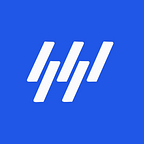Blockchain use case: Trade Finance
The Disruptor Has Become The Game Changer This Time in the World of Trade Finance
Since the hype that Bitcoin created in 2009, much has been written, researched, discussed, said, and talked about the Blockchain technology blueprint that it was built on. And since then it never ceased to amaze and dominate headlines that caught and influenced many sectors to adopt its use and found its practicalities powerfully far-reaching in the improvement of business, fair trade, commerce, and the democratization of the global economy.
Bill of Lading: Legacy of the Middle Ages Still Applied.
The Economist, the World in 2019, featured a test run by Maersk in 2014 revealing that a load of shipment from Kenya to the Netherlands consisted of over 100 actors, 30 people, and 200 interactions. The 34 days of shipment included a 10 days waiting period for documents alone.
The centuries-old manual paper processing in its outdatedness is still the default transaction in trade finance. Receipts have to be physically stamped from the carrier to the suppliers, buyers, insurers, financiers, and other parties involved across borders. As documentations are slow and cumbersome, taking weeks to complete and without any reconciliation in place, it is highly vulnerable to error and fraud.
Successful Use Cases.
Barclays was the first bank to use blockchain technology in trade finance. Using a platform called Wave, its development allowed bills of lading and other trade transactions such as insurance certificates to be securely signed and sent through the blockchain exchange. They successfully tested it in 2016 through a trial letter of credit transaction between Seychelles Trading Company and Ornua using the Wave platform. Reflecting on the Barclays case, digitizing processes through blockchain technology can vastly improve supply chain processes by completing transactions in a matter of hours.
Trending Cryptocurrency Hub Articles:
1. Introduction to Cryptocurrencies: BSV, the Messenger to Realize Satoshi Vision
2. How Do I Secure My Blockchain Wallet
HSBC was the first to apply a commercially viable trade finance transaction utilizing blockchain technology. A letter of credit involving Soybeans was issued on behalf of a US food and agriculture firm Cargill, to lender ING. The successful transaction saw the soybeans being shipped from Argentina en route to Malaysia.
In 2017, several major European banks hired IBM for the purpose of creating a platform dedicated to facilitating small business finance on cross border orders.
IBM and MAERSK are collaborating for a container shipping industry blockchain to digitalize the supply chain process finally.
Blockchain’s Unfair Advantages.
The uber of the digital space has some things to offer to boost advantages any user can hope to have and so much more.
It is Efficient. Transactions are completed directly between parties sans intermediaries and with digitized information; it has the ability to operate smart contracts which automatically trigger commercial action.
It is Traceable. Proof of ownership by tracking goods and assets and where they are currently located; asset information can be relayed to and from the new owner for possible action.
It is Transparent. Increased commercial transparency can reduce delays in commerce. Details of transactions on commercial agreements can further improve trust.
It is Auditable. Each transaction is recorded sequentially and indefinitely; it provides an indelible audit trail for the life of an asset between parties.
It is Secured. Each transaction is verified within the network using independently verified complex cryptography; the authenticity of information can be assured.
It is Collaborative. It allows for each party to share quickly and securely trade finance related data; fragmented internal systems are centralized, which allows for interoperability.
Conclusion
The $12 trillion-a-year and growing global trade finance market is the one perfect use case for blockchain and its distributed ledger technology (DLT) application. Top-tiered banks who usually would invest in other areas are now taking a serious look at trade finance as one of the most dependable drivers of revenue. When global trade accounted for 24.13% of global GDP in 1960, today, global trade accounts for more than 70%. Blockchain technology might just be the missing link that players can trust between increasingly global trade and more access to funding that will finally open the floodgates for a world economic breakthrough.
